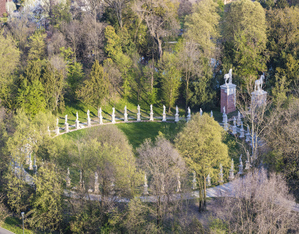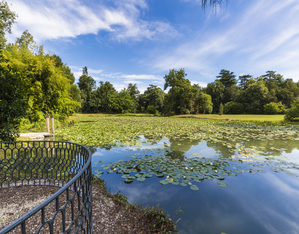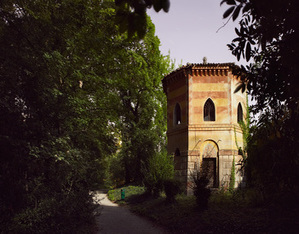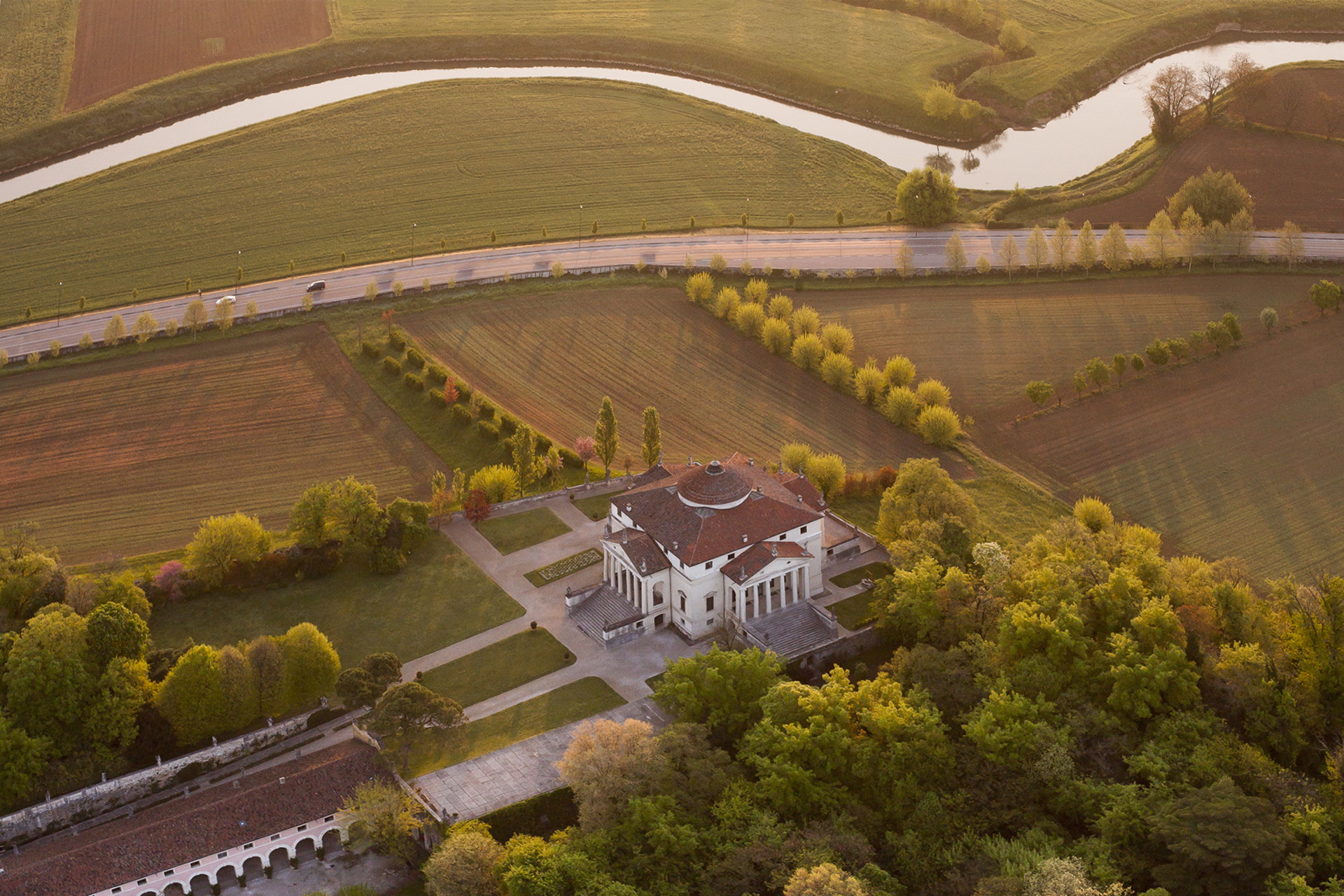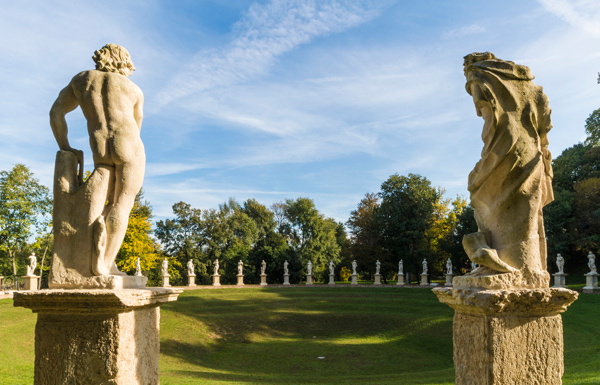Known as the “Paradiso” (paradise) in the 16th century, during the 19th century this garden was radically modified with the introduction of a lake and bald cypress trees, Moorish greenhouses, and the grand cavallerizza horse-racing space set against the backdrop of a vast and lush landscape park.
In 1607 Nicolò Corner commissioned Vincenzo Scamozzi to reorganise the 16th-century complex. The latter published his project in a book entitled “L’idea dell’architettura universale” (1615). Towards the end of the 17th century the garden was expanded past the canal and connected to its earliest nucleus via a nine-arch bridge, new fish pools were installed, hillocks were created and one hundred statues, most of them by Orazio Marinali (1643-1720) were used to line the park’s straight “stradon” (main avenue). At the north end of the avenue a portal with two pedestals used to display a set of equestrian statues, now relocated in the Cavallerizza horse-racing space. At the beginning of the 19th century the property was in a state of neglect and in 1816 the it passed to Antonio Revedin: a few decades later, from 1852 onwards, the complex was brought back to life: Giambattista Meduna designed the lavish palazzo and transformed the formal garden into an English-style landscape park. Meduna’s role was later taken by Francesco Bagnara and later by the Frenchman Marc Guignon, whose idea it was to create the amphitheatre bordered by the pre-existing statues. Around 1868 Antonio Caregaro Negrin completed the project for the new owners, the Rinaldi family, by using all the typical features of landscape gardens – winding paths, grottoes, cliffs – and by introducing original and picturesque buildings such as the “cavana” (boat-house) and the Moorish style greenhouse on the islet in a lake with an extremely indented shoreline. Completed in 1878, the park contains about a thousand trees of 65 different species. Among them there are over 30 one-century-old specimens, authentic natural monuments such as yew trees, English oaks, horse chestnuts, common hornbeams and bald cypress trees as well as a number of exotic species. In 1924 the complex became property of the Bolasco family, and in 1967 it was donated to the University of Padua that made it the seat of CIRPAM (Centre for research, restoration, protection and promotion of historic parks and monumental trees).


